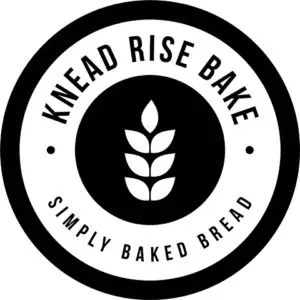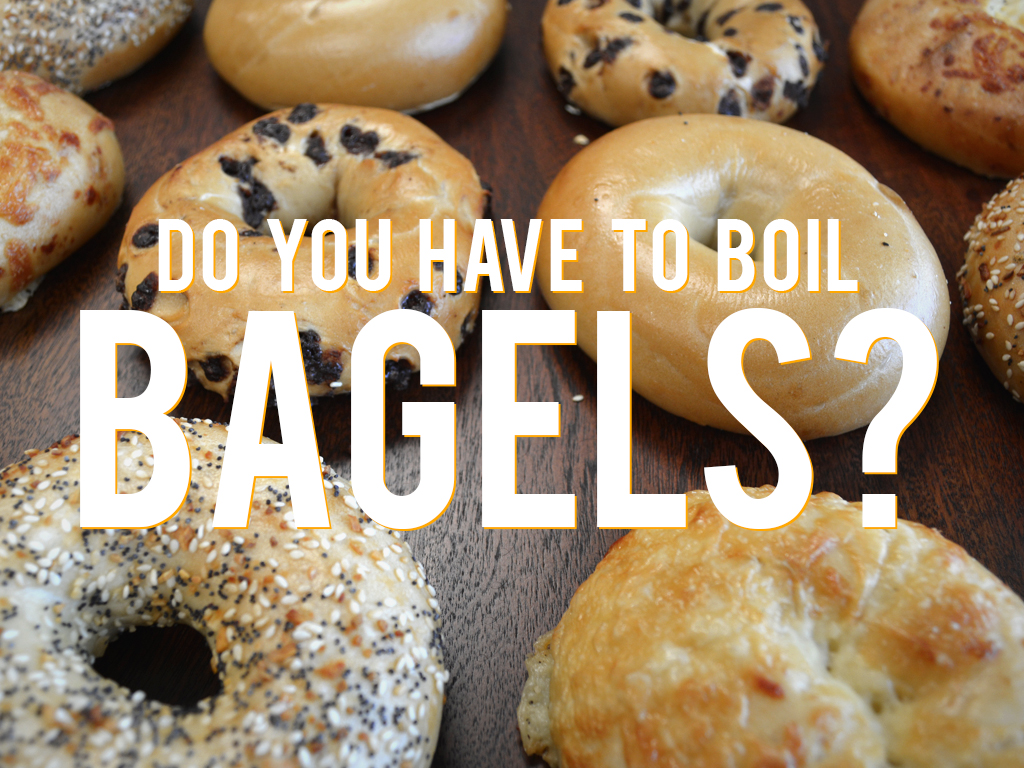Home bakers that have established a bit of success with the basic rustic and sandwich loaves almost always want to branch out into other varieties of bread. If that’s you, we salute you!
Bagels are almost always found at the top of the short list of new breads to try when venturing out from the basic loaves. If this is where you’re at, again we cheer you on! Bagels are a great option for stretching yourself as a new baker and learning a few new skills when working with dough.
But, we often find many eager bakers can lose a bit of their desire for baking bagels when they learn (or remember) that bagels are boiled before baking. If that’s you, yet again, we’re still cheering you on but unfortunately, we cannot save you from the boiling stage.
Bagels need to be boiled for 30-60 seconds per side before baking in order to develop a chewy crust (outside) and dense chewy crumb (inside). By boiling bagels before baking the dough’s surface develops a gel wall. That gel keeps bagels from rising as much as typical bread so that it is dense and chewy while ensuring a crust that is both firm and chewy after baking.
Sorry, don’t run away though. The boiling step is really fairly painless and totally worth it. Out of all of the bread that we have made, homemade bagels are probably the biggest win compared to store bought. In fact, I have to admit our homemade bagels are better than any bagel I’ve ever had. And to be honest with you, we’re not bagel masters over here. I know way more about sourdough and everything that makes bread rise a lot to have light and airy crumbs. Having dense chewy bread is something I worked very hard on avoiding over the years. 🙂
Let’s talk about how to boil these things simply and easily with no fuss.
Tips For No-Fuss Boiling
First, you’ll want to grab the widest pot you have, but try to avoid using anything that is very deep. You want the water to be higher than lower in the pot as it will make getting your bagels in and out of the water easier. But also avoid going too shallow, as you’ll want to make sure the bagels can float without touching the bottom of the pan (to avoid having flat bottoms and tops). And the widest pot you have is ideal because you’ll be able to fit more bagels in at one time while leaving room to maneuver them.
Second, avoid making too many bagels on your first batch. You don’t want your boiled bagels sitting too long so that they cool down completely. I find this is one of the factors that tends to make them more wrinkled vs smooth once baked (especially if shaping or proofing was off). Plus, it’s just easier to manage less in the beginning. If you can only fit three bagels in your boiling water then I’d suggest baking just 6 bagels to start. That way you only have two rounds of boiling before baking. If you can fit four, then shoot for eight, etc. Remember, you can always put shaped dough in the fridge for at least 8 hours (we have an entire post on this). Depending on how cold the fridge is, you could go up to 24 hours before the danger of over-proofing. So if you have your heart set on making 16 bagels, just break it up into batches. Once you finish with the first baked bagels, pull more out of the fridge and simply boil then bake again.
Third, reduce the heat of your boil so that it isn’t a rolling boil. You want the water to be just on the cusp of boiling. This is easier to work with, and we also think it keeps your dough from wrinkling and dimpling (old pros have no worry here, but if your shaping and proofing are not on point it’s better to play it safe).
Fourth, have a strainer on hand to do all of your flipping and maneuvering. Something like this or this (links take you to Amazon). Also, instead of flipping halfway through the boil try doing a gentle swirling of the water and pushing the bagels slightly down for the full boil instead. As long as you keep them moving the whole time, you’ll be good to go. Kind of like in this video.
Do I need Malt Syrup and Other Additives in my Water?
Most ingredients recipes suggest adding to your water are primarily intended to make the bagels brown more during baking. Besides looking better, browned bread actually has more flavor profiles. But, adding syrup (honey is often used as a substitute to malt syrup by home bakers) adds a distinct sweet and tangy taste that tends to be typical of classic bagels.
To make the most authentic bagel possible, malt syrup is ideal. However, honey or molasses are perfectly fine. We most often use honey, because that’s what is easy to get our hands on. It produces excellent browning and good sweet flavor notes.
Additionally, baking soda is often added to the water mixture to make more browning take place. If you find your bagels struggle with browning with just honey, you can go with a little baking soda as well. Many recipes call for it, and I’d suggest using the amounts given in the recipe of your choice. Or if you’d like more on browning bread, check out our post for troubleshooting pale bread here.

